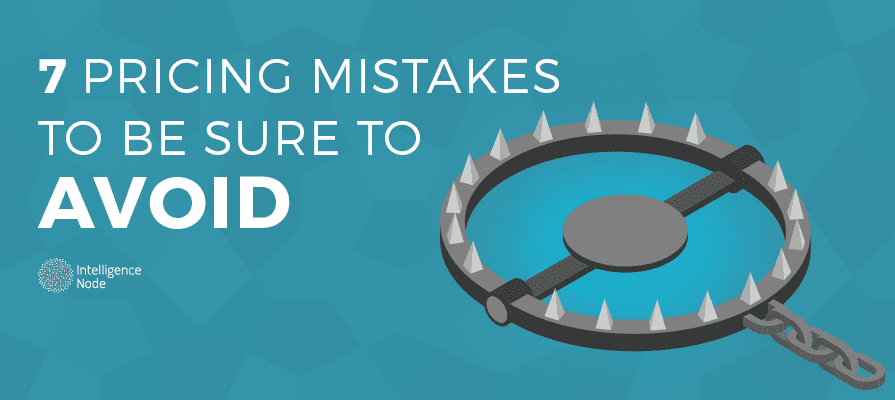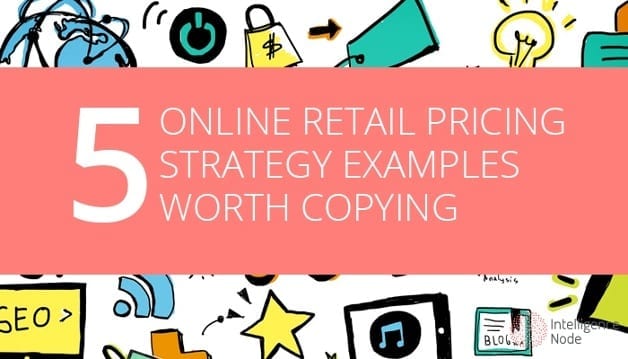Pricing. It’s the part of running any business that has professionals facing sleepless nights and constantly second-guessing themselves. After all, how can anyone ever truly be certain that its approach to pricing is the most effective means of delivering products and/or services to willing customers? In the ultra-competitive world of eCommerce, this pressure to optimize is even greater, given the ever-evolving online marketplace. What will work best for your specific niche may vary, but let’s go over a few fundamental pricing mistakes that you’re better off avoiding completely.
Pricing Mistakes to Avoid Like the Plague
1. Assuming that lower prices deliver the best results
Common sense dictates that the lowest prices are bound to connect with your target audience, but believe it or not, this isn’t always the case. In fact, lowering the prices of your products too drastically can cheapen the perceived value they carry for consumers. Rather than sacrificing too much of your bottom line in a desperate bid to win sales, aim to price your products based on what they offer to your customers. Find your product’s sweet spot on the price quality matrix to determine how it’s viewed by your customer base.
2. Not featuring a variety of options
Today’s consumers are accustomed to numerous options whenever they make a purchase. So be sure to offer multiple price points for various versions of your products as well as customizable shipping and delivery selections for customers to choose from. This allows them to personalize their checkout process and offers a whole different level of engagement that ultimately makes them feel more instrumental in shaping their purchase.
3. Not practicing customer segmentation
Because every customer brings his or her own needs and desires, it’s best to treat them as such. Break your customer base into different types of individuals through customer segmentation. Once you’ve defined the kinds of people who buy your products, you can tailor your approach to include everything from how you package and present your product to (naturally) the price point you use. This enables you to take full control of the perceived value various groups have of what your company is offering.
4. Overcomplicating your offer
In keeping with the integral role that presentation plays in shaping your pricing, you should remember to keep things as simple as possible. This oftentimes includes such minute details as not including unnecessary decimal points and other punctuation in how your prices are displayed to how many syllables they take to pronounce aloud. The smoother and easier it is for customers to comprehend your price points, the faster they’ll be able to move through the purchase decision phase and on to checkout.
5. Postponing the embrace of automation
One of the most prominent trends in retail right now is the integration of automated systems to help optimize pricing. Using a variety of key data points, this more fluid approach to setting your price points removes the guesswork of how high or low your prices should be. Moreover, it makes it far easier to determine the best way to target certain segments of your customer base.
6. Not testing new approaches
Without trying new approaches to pricing, your business is certain to wither and die over time. That’s why consistent testing needs to be a part of how you do business, if it isn’t already. New pricing strategies are being developed and discovered all the time, but your business won’t be able to benefit from them unless you’re willing to give new pricing techniques a legitimate shot. Try some A/B tests to see how new types of pricing compare to your tried-and-true methods. Then you can simply implement those tactics that demonstrate worthwhile performance.
7. Not focusing on the customer experience
As stated above, perceived value should be the paramount determining factor in how you price your products, more so even than what your competitors are doing or what you feel may offer the best deal to your customers. This is because perceived value puts you squarely in the position of your target audience, keeping the customer experience front and center. Rather than too strictly adhering to your company’s own costs, follow your customers’ perspective, and you’re bound to be better off.
For more invaluable insights into how you should approach your company’s pricing, check out our Comprehensive Guide to Competitive Online Retail Pricing Strategies.





